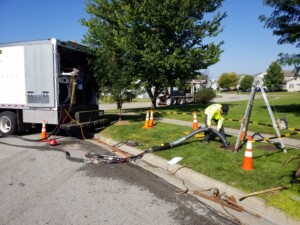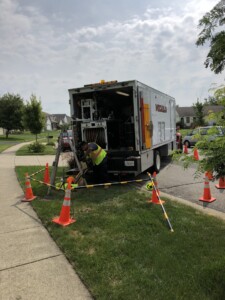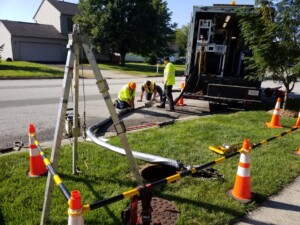Challenge
Less than 10 years ago River Valley Highlands turned over an unfinished, developer-constructed sewer system to the City of Lancaster, OH. One to three times a year numerous homes experienced unexplained basement backups during heavy rain events. An investigation showed a significant increase in flow during these events with peaks greater than 10 times the norm. Spot CCTV revealed no visual defects in the pipes.
Approach
The project work included inspecting and testing joints in 22,582 linear feet of pipe consisting of 8-inch and 12-inch vitrified clay pipe (VCP). 4,652 joints were tested; 961 (21%) failed the air test and were successfully grouted. Notably, the project work also included inspecting and testing 10-inch and 12-inch sewer pipe. 45% of the 10-inch and 12-inch pipes, which tended to be in the wetter, lower lying area, were found to leak. 489 lateral taps and the first 10 lf of the lateral were air tested; 256 (52%) failed the air test and were successfully grouted. Significantly, 93% of the laterals on 10-inch pipe and 70% of the laterals on 12-inch pipes, which tended to be in the wetter, lower lying area, were found to leak. For the entire project, only one fracture was found in any of the pipes.
Results
Since completion of the project, the 2018 summer and fall seasons were the wettest on record in more than a decade. During this period, no sanitary sewer overflows (SSOs) or basement backups have occurred. Post-rehabilitation flow monitoring is underway to quantify the reduction in I&I. It is believed that more follow-up monitoring will demonstrate success beyond the initial success, which was the elimination of SSOs and basement backups.




